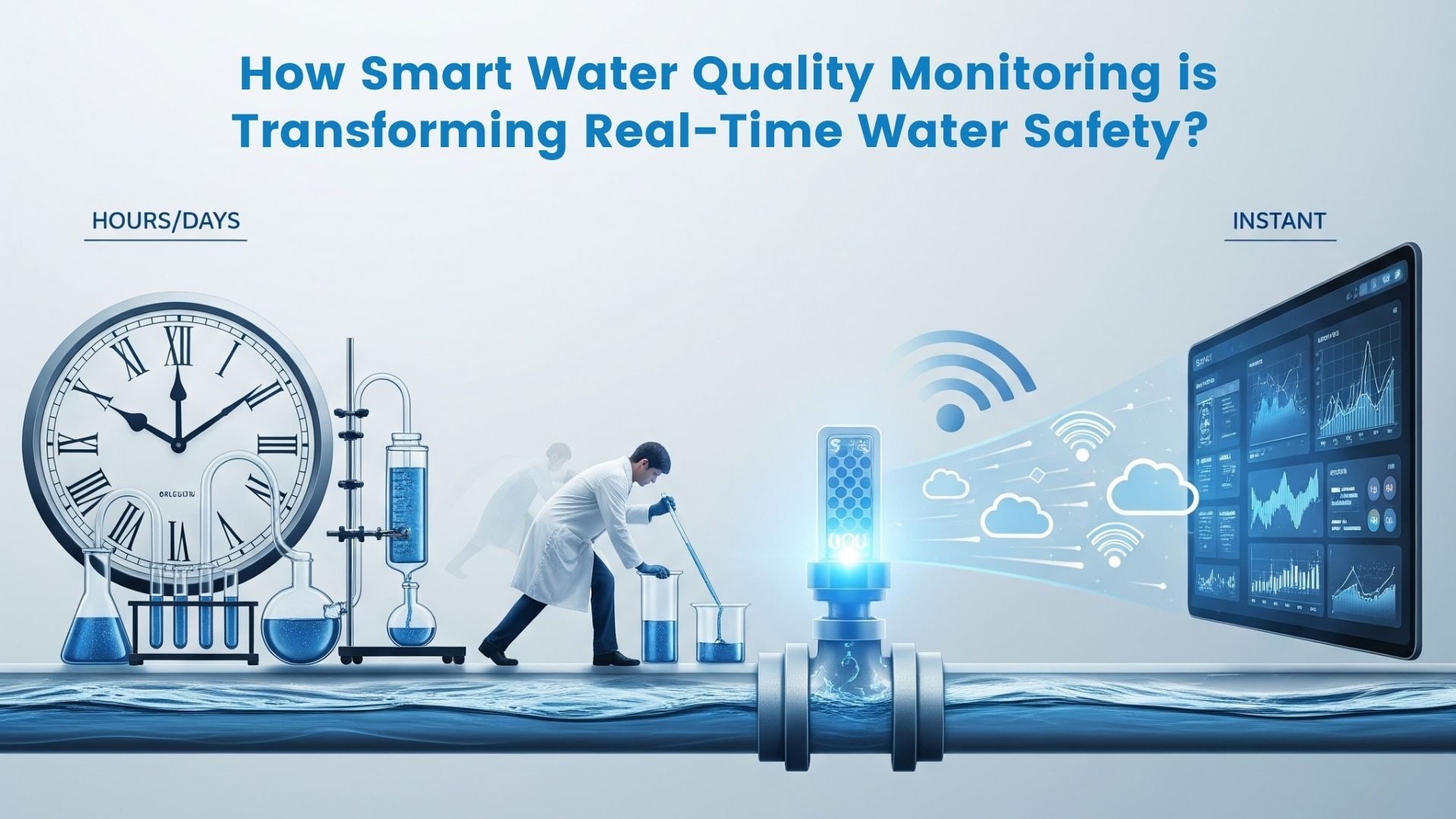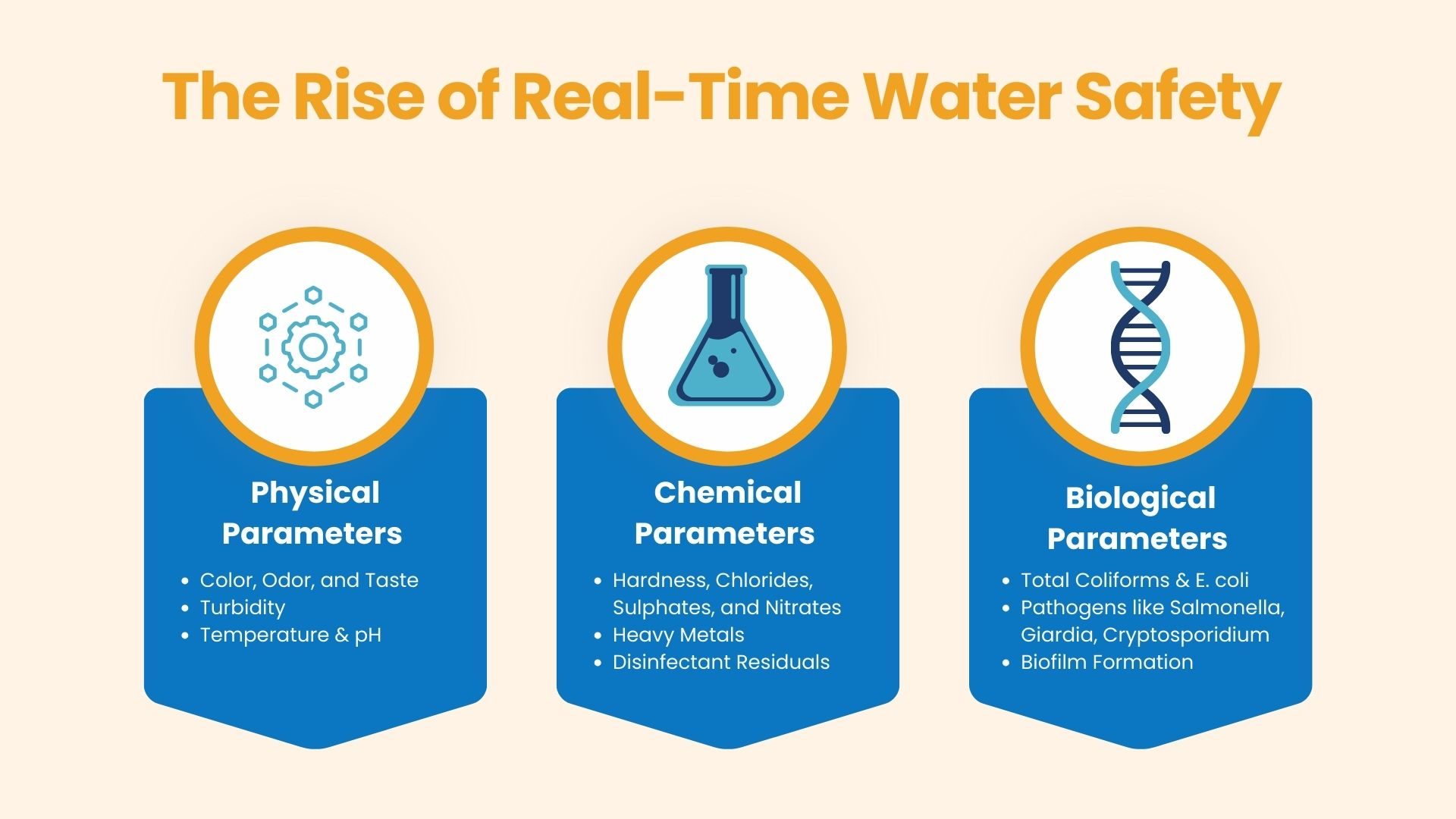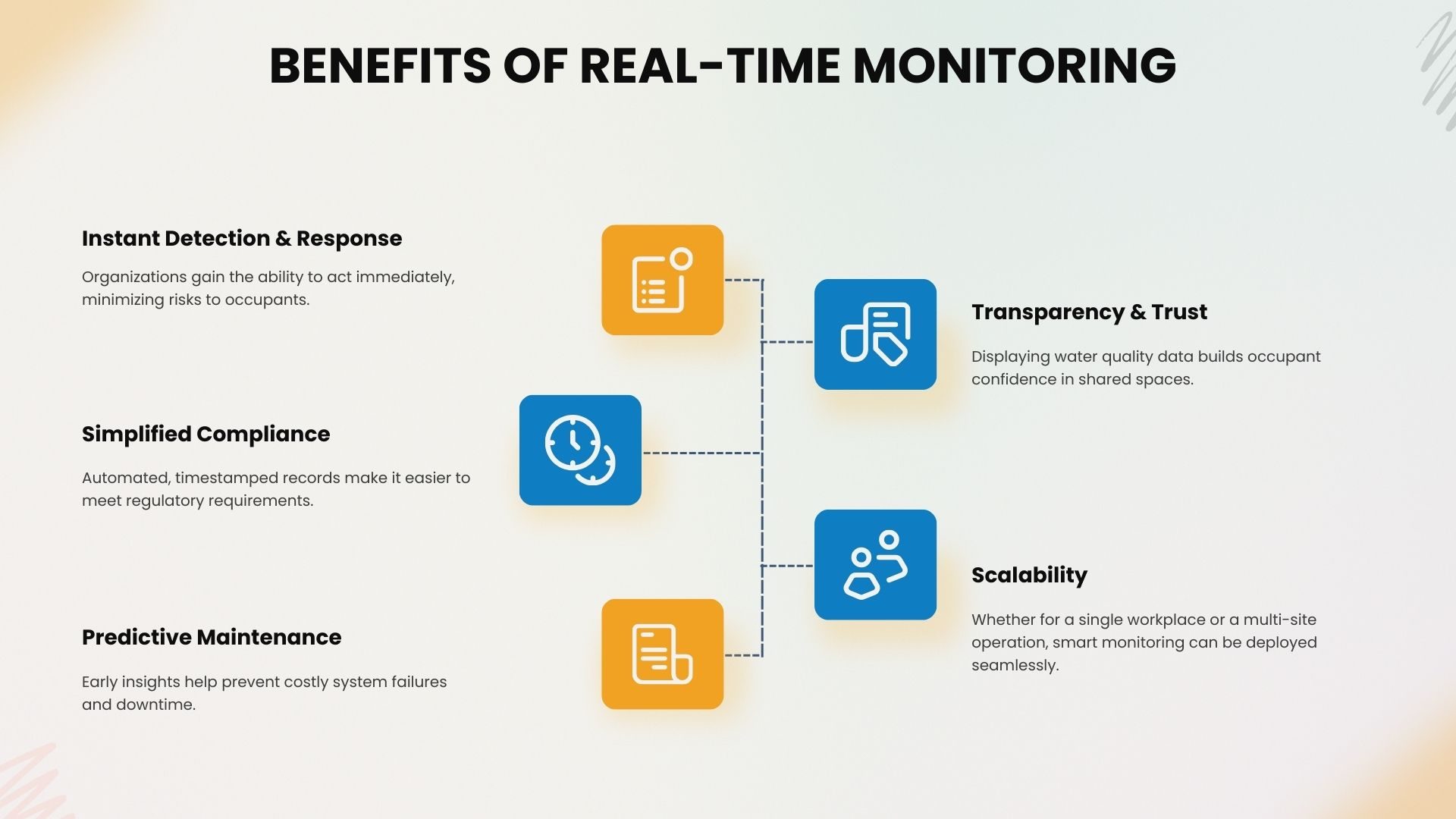
Water safety is no longer just a compliance requirement—it’s a critical factor in protecting health, maintaining productivity, and building trust. From hydration stations in offices to large-scale facility plumbing systems, ensuring safe and clean water has become a priority for organizations across industries.
Conventional methods of water quality testing rely on manual sampling and lab analysis. While reliable, these approaches introduce delays of several hours or even days. In fast-paced environments like offices, hospitals, or hotels, such delays can mean that people are exposed to unsafe water before an issue is even detected.

Smart water monitoring solutions powered by IoT and AI are redefining how organizations approach water safety. By using connected sensors and cloud-based analytics, these systems provide continuous visibility into critical parameters such as:
🔹 Physical Parameters – These reflect the sensory quality of water:
🔹 Chemical Parameters – Essential for assessing water safety and compliance:
🔹 Biological Parameters – The most critical from a health perspective:
Instead of waiting for lab reports, facilities can instantly detect anomalies and act before risks escalate. Monitoring across these three categories provides a holistic picture of water hygiene.

Real-time water monitoring is relevant to multiple sectors:
Connected water quality systems don’t just monitor—they also learn. By capturing and analyzing data over time, they provide:
As AI capabilities evolve, these systems could even suggest corrective measures automatically, further reducing the burden on facility managers.
With growing awareness, stricter regulations, and advances in connected technologies, real-time water quality monitoring is set to become the new standard. Organizations that adopt smart monitoring today will be better equipped to ensure safety, compliance, and sustainability tomorrow.
Real-time water quality monitoring is no longer optional—it’s essential. By moving from delayed manual testing to continuous, connected insights, organizations can ensure safer environments, reduce risks, and build trust with employees, guests, and stakeholders.
At Caleedo, we help organizations embrace this smarter approach to water safety with our innovative workplace solutions. Our goal is to make workplaces healthier, safer, and more sustainable through technology-driven monitoring and management systems.
Platform
Resources
Company
Solutions
Industry
Function
Contact us
Feel free to contact us !
Copyright © 2024-2025 Caleedo | Powered By PAS Digital